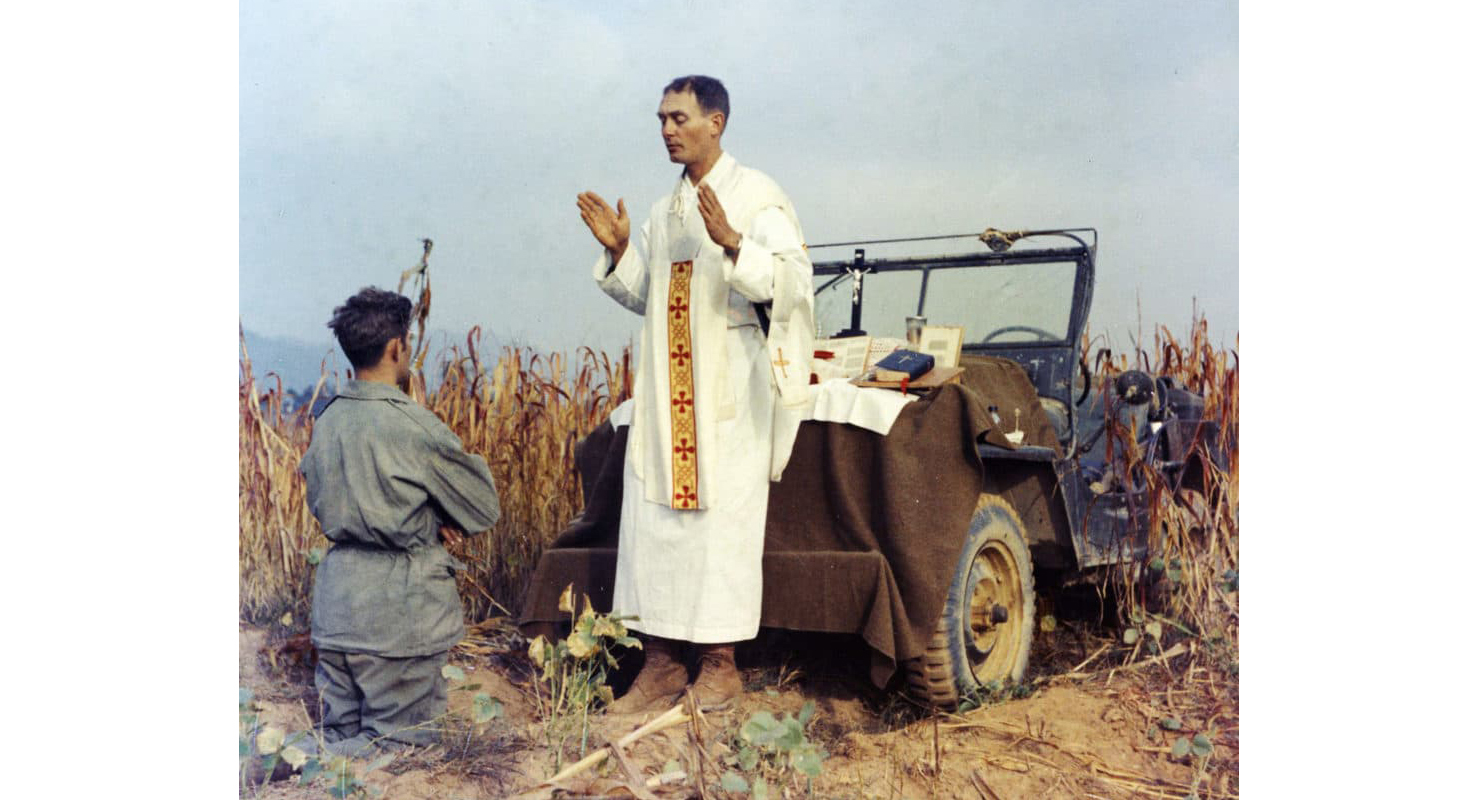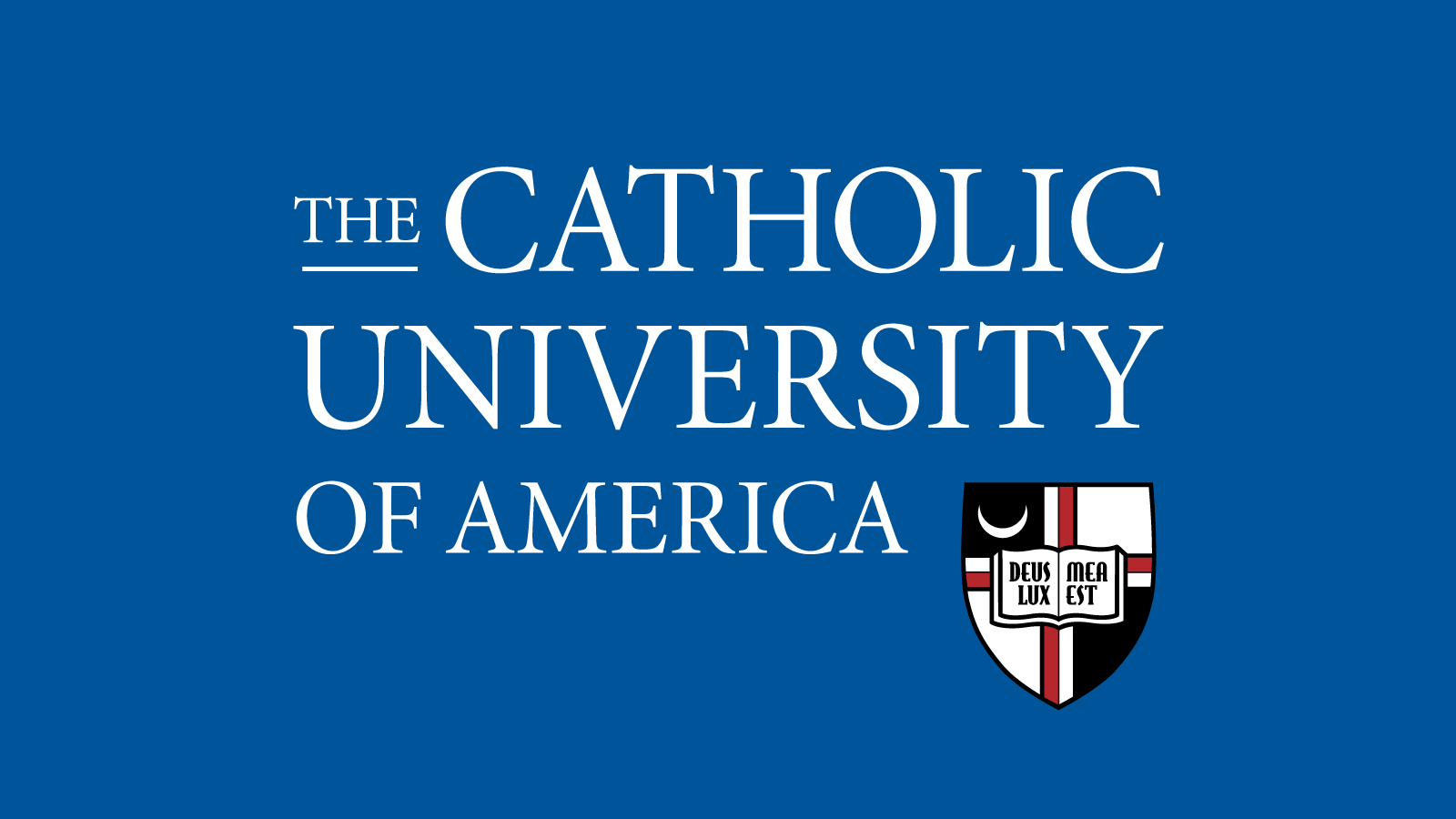Over three days during the week of July 24, 2023, the leadership at The Catholic University of America led a safety walk and two town hall meetings to address security concerns. The following is a summary of the walk and the town hall meetings, highlighting the key points raised by participants and actions being taken by the University.
Gathering on Tuesday, July 25, at the spot in front of O’Connell Hall where Maxwell Emerson was killed on July 5, Father Bernard Knapke, O.P. led the safety walk’s participants in an opening prayer. In his prayer, Father Bernard asked for healing and an end to the violence that has gripped the District of Columbia over the summer.
After maps of the route were distributed, University President Peter Kilpatrick detailed the reasons for the walk—giving focus to safety and security and coming together as a community, which includes the University and the Brookland neighborhood. In addition to the maps, participants were given checklists of items to review throughout the walk and to write down any safety concerns, including things like poor lighting, overgrown foliage, or lack of police presence.
Starting at the Angels Unaware statue, the group led by President Kilpatrick walked over to Monroe Street Market. This area is often frequented by students, faculty, and staff who are looking to grab a bite to eat or visit the University bookstore. Many students live in the apartments above the businesses. It’s also an area where one person was killed on July 17.
President Kilpatrick, along with representatives of the Metropolitan Police Department (MPD), noted that there would be more police patrols in the area going forward. Moreover, President Kilpatrick stressed that a community response—including the local businesses—is needed to address crime in the area. He said he would continue to meet with property owners, businesses, and community leaders to develop solutions that benefit the community and campus.
After stopping in front of the BGR restaurant, where Fifth District Commander Sylvan A. Altieri III spoke about the MPD’s stepped-up efforts, the group walked to the Brookland-CUA Metrorail Station.
The Metro station is an area of concern for many people due to its lack of lighting and other issues. Though the campus is so close to the station, the limited visibility presents many safety risks to those walking at night. One participant also pointed out that the nearest call box is over 150 meters from the Metro entrance. The Arts Walk on the Monroe St. side of the Metro entrance has low lighting. Additionally, there is overgrown brush next to the Metro. DPS, MPD, and Metropolitan Transit Police (MTP) have all committed to increasing patrol and other efforts to reinforce safety on and around the Metro stop.
After spending time at the Metro station, the group walked down John McCormack Road (Power Plant, Columbus School of Law, and Saint Vincent’s Chapel) to inspect lighting, brush, and test the blue light call boxes. A demonstration on how to use the call boxes was done, relaying the user straight to a DPS responder. Some call boxes have cameras, which allow responders to see the caller when they are in need of assistance. Some 115 blue light call boxes are located all around campus, and at least one is visible from virtually any location on campus. In terms of maintenance, there was some concern about overgrown bushes and trees around St. Vincent’s Chapel, where students are often attending nighttime Masses.
Walking further, the group stopped at the corner of Taylor St. and John McCormack Road. Many student-athletes cross under the Taylor Street Bridge to get to their practices and games at the DuFour Athletic Center. When students arrive on campus for the 2023-24 school year, there will be security in this area early in the morning and late at night when many athletes walk between campus and the DuFour Center.
The next two stops covered the DuFour Center and Carlini Field, the northernmost points of the University. MPD is often stationed at the Hawaii Ave. shopping plaza, which increases the security of the area.
The final stop was Ward Hall, which faces Harewood Rd. Harewood Rd. is a very long street with many blind spots. MPD discussed stationing multiple officers along the road to discourage and prevent auto theft and break-ins. Police presence on Harewood Rd. has helped significantly reduce car theft in the past. Attendees asked for more focus from patrollers near the O’Boyle parking lot and Facilities offices.
The primary intention of the Safety Walk was to unite the community behind an action plan that would keep Catholic University safe. All input was welcomed and encouraged. The sense of community that came from the Safety Walk is meant to motivate everyone to make a difference by recognizing the personal responsibility that contributes to the safety of the community as a whole.
On July 26 and July 27, the University leadership convened two town hall meetings. The first was for students, faculty and staff; the second was for parents.
Approximately 200 people attended in-person at the July 26 town hall meeting in Heritage Hall, with another 250 joining virtually. There were approximately 275 parents who attended the evening town hall meeting held on July 27.
Both meetings were led by President Kilpatrick with Chief of Staff Larry Morris, with both of them giving portions of a briefing. At both meetings, President Kilpatrick laid out an action plan for the campus and community, which is also noted in the presentation.
Guests at the July 26 town hall meeting included Metropolitan Police Representatives, Captain Ronald Bridges from the Fifth District and Captain John Terry of the Fourth District. Metro Transit Police Captain Maurice McKinney was also present.
Vice President for Student Affairs Judi Biggs Garbuio and University Student Government Association President Maevis Fahey participated in the parents town hall meeting.
After each presentation, questions were asked and many of the topics addressed were similar in both town hall meetings.
On Wednesday, July 26, President Kilpatrick met with Mayor Muriel Bowser and new Police Chief Pamela Smith. In the meeting, assurances were made by the D.C. government that they would take more proactive measures to support the University and increase the police presence in the area.
Chief Smith also committed to coming to the new student Orientation and having her department work with University staff on finding ways to incorporate them into our safety and security education efforts.
Additionally, Metro Transit Police have committed to more patrols of the station, working with the University on increased lighting, and taking other measures to improve the safety and security of the area. Representatives are also making themselves available to help with education efforts on campus, especially during the beginning of the school year.
Questions in both town halls were asked about the University’s response to the recent violent events. One participant asked when the construction of the new Conway School of Nursing will be done, as it has been blocking a safe path through campus for some time. There is not yet a definite date that construction will conclude, but other safety measures can be put in place in the meantime.
The violent shootings of Maxwell Emerson and Robert Lavender have shown the University that more must be done to protect the community. With measures such as the Safety Walk, town halls, and increased security, the goal is to create a safe environment for all. The University is looking forward to launching a “Keep Catholic Safe” campaign in the early fall.
Something that came up in the first town hall was the issue of how to protect oneself. One of the most popular responses to emergency situations is to learn what can be done in order to be prepared for any emergencies in the future. Many questions concerned what individuals can do to protect themselves.
When walking around campus or off campus, individuals are urged to do the following:
The Rave app is the only security app used by the University. Updates of threats and emergencies can be sent in real time. The University sends alerts as quickly as possible with the most accurate and up-to-date information.
While DPS offers training sessions throughout the year, not everyone is aware of them. Commitments were made to increase the number of training opportunities and help students, faculty, and staff become better prepared for emergencies. There are plans in the works for MPD to come to Orientation and discuss safety with first-year students and their parents. In addition, the President discussed plans to hire a dedicated Emergency Response Coordinator to oversee responses to emergency situations.
DPS, MPD, and MTP have each committed to increasing the number of officers patrolling on and around campus. There has been an increase in bike and foot patrolling, as well as more DPS and MPD cars stationed in the area. An area of particular concern is Monroe St., which is where many students live in off-campus apartments. This area is technically not a part of the University’s jurisdiction, but MPD is increasing patrolling and collaborating with DPS.
Questions in both town halls touched upon the complacency of officers patrolling the area. By strengthening connections between different groups, officers can have a better understanding of how to work together to protect the campus community.
At the parents town hall meeting, SGA President Maevis Fahey said that the students know they live in a larger community and have worked together to stay safe. She said that at Orientation, there will be opportunities to learn more about tips for staying safe and that an increased DPS and police presence will help make the students feel more secure.
The Brookland-CUA Metro Station is one of the greatest concerns shared by members of the campus community. This was expressed by participants of both town hall meetings. MTP Captain Maurice McKinney was able to answer some questions regarding the safety of the Metro. The entrance to the station has a few security risks which hinder the visibility of surrounding areas. There are plans in the works to improve lighting, remove objects that encourage loitering, and cut down brush.
To protect the Metro as a whole, Captain McKinney said that their top priority is enforcing fares. They found a correlation between fare evaders and violent crimes around D.C., so their fare enforcement contributes to a much larger cause.
Another participant inquired about the presence of private security on the Metro. They have been hired because of an MTP staffing shortage, but their presence is still meant to create a safer environment for Metro riders. Their visibility in the stations makes it so they can ride the Metro to help decrease crime on the trains. In addition, MTP has collaborated with MPD to have officers patrolling major stations around the city.
There were several questions regarding the possibility of a fence or wall around the campus. President Kilpatrick said that he wants to remain an open campus, and be part of the neighborhood. He believes that the steps the University and community is taking now will help with safety and security without needing to erect a fence.
Many studies have also been done on the feasibility of a fence, wall, or other structures, so if in the future it is determined that is needed, then the University is able to look at options. However, there are no future plans to erect any structures on the perimeter of the campus.


